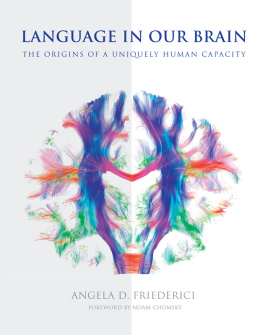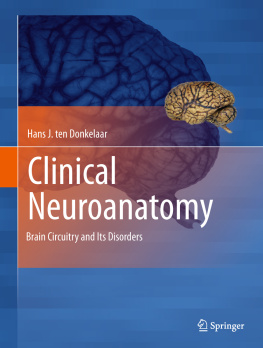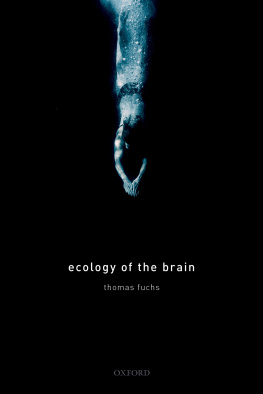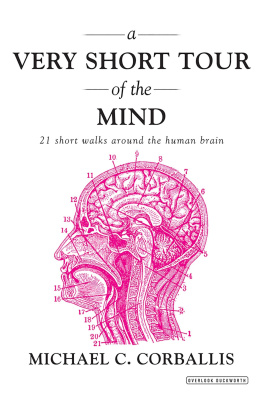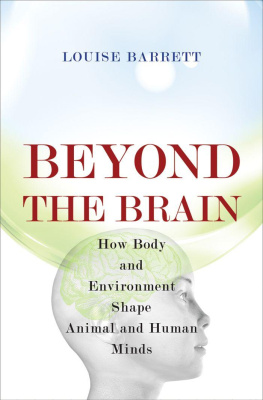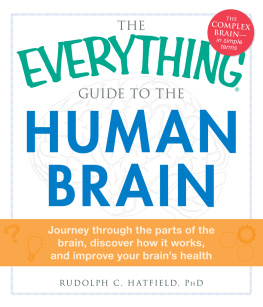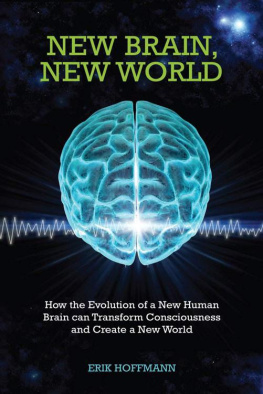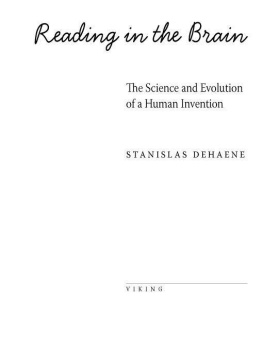The Human Advantage
A New Understanding of How Our Brain Became Remarkable
Suzana Herculano-Houzel
The MIT Press
Cambridge, Massachusetts
London, England
2016 Massachusetts Institute of Technology
All rights reserved. No part of this book may be reproduced in any form by any electronic or mechanical means (including photocopying, recording, or information storage and retrieval) without permission in writing from the publisher.
This book was set in Stone Sans and Stone Serif by Toppan Best-set Premedia Limited. Printed and bound in the United States of America.
Library of Congress Cataloging-in-Publication Data
Names: Herculano-Houzel, Suzana, 1972
Title: The human advantage : a new understanding of how our brain became remarkable / Suzana Herculano-Houzel.
Description: Cambridge, MA : The MIT Press, 2016. | Includes bibliographical references and index.
Identifiers: LCCN 2015038399 | ISBN 9780262034258 (hardcover : alk. paper)
eISBN 9780262333207
Subjects: LCSH: BrainPhysiology. | Intellect.
Classification: LCC QP398 .H524 2016 | DDC 612.8/2dc23 LC record available at http://lccn.loc.gov/2015038399
10987654321
To my parents, Selene and Darley,
who gave me wings and taught me how to fly
To Jon Kaas,
who encourages me to soar higher
Table of Contents
List of Tables
List of Illustrations
- , calculated for the data points shown, where each point represents one mammalian species. The line illustrates the predicted brain mass for an animal of any given body mass; knowing that body mass allows one to predict, by simply applying the formula, how large the brain of that animal should be. Occasionally, however, a species (filled circle) is found to have a much smaller brain, and another (filled square) is found to have a much larger brain, than it should. Of course, whether a species with a larger-than-expected brain has a brain too large for its body or a body too small for its brain is a whole other issue.
Preface
Surely We Are SpecialAren't We?
Humans are awesome. Our brain is seven times too large for the size of our body, and it takes an extraordinarily long time to develop. Our cerebral cortex is the largest relative to the size of the entire brain, and its prefrontal portion is also the largest. The human brain alone costs a tremendous amount of energy25 percent of the calories needed to run the entire body in a day. It became enormous in a very short amount of time in evolution, leaving our cousins, the great apes, behind, with their meager brains only one-third the size of ours. So the human brain is special, right?
Wrong, according to new evidence coming from my lab that you are about to discover in the chapters to come: our brain is remarkable, yesbut not special in the sense of being an exception to the rules of evolution, singled out to become amazing in its own exclusive way. And yet we seem to have the most capable brain on Earth, the one that explores other brains instead of being explored by them. If our brain is not an evolutionary outlier, then where does the human advantage lie?
The Human Advantage invites you to drop the usual bias of considering humans as extraordinary and, instead, to look at the human brain in the light of evolution and of the new evidence that suggests a different account for what makes our cognitive abilities unique: that our brain outranks that of other animals not because we are an exception in evolution, but rather because, for simple evolutionary reasons, we hold the largest number of neurons in the cerebral cortex, affordable to no other species. I will argue that the human advantage lies, first, in the fact that we are primates, and, as such, owners of a brain that is built according to very economical scaling rules that make a large number of neurons fit into a relatively small volume, compared to other mammals. Second, we are the primate species that benefited from the fact that, some 1.5 million years ago, our ancestors came up with a trick that allowed their descendants to afford a rapidly increasing and soon to be enormous number of cortical neurons, so far rivaled by none: cooking. Third, and finally, thanks to the rapid brain expansion now affordable by the extra calories, courtesy of cooking, we are the species that owns the largest number of neurons in the cerebral cortexthe part of the brain responsible for finding patterns, reasoning logically, expecting the worst and preparing for it, developing technology and passing it on through culture.
Comparing the human brain to the brain of dozens of other animal species large and small has been a most humbling experience, one that reminds me that there is no reason to suppose that we humans have been singled out in our evolutionary history or chosen in any way. It is my hope that this new understanding of the human brain will help us better appreciate our place on Earth as a species that, while neither special nor extraordinary (since our species conforms to the same evolutionary scaling rules that apply to other primates), is indeed remarkable in its cognitive abilities, and, thanks to its outstanding number of neurons, has the potential to change its own futurefor better or for worse.
Rio de Janeiro, January 2015
Acknowledgments
This book summarizes ten years of work that were first made possible thanks to the support and generosity of Roberto Lent, who arranged for an unprecedented position in science communication to open at the Institute of Biomedical Sciences at the Federal University of Rio de Janeiro (which I filled), then invested in my crazy idea of turning brains into soup to find out what they were made of. We have since stopped collaborating, but he will always have my gratitude for setting me on my way.
Jon Kaas, Distinguished Centennial Professor at the Department of Psychology at Vanderbilt University, entered my professional life and changed its course in 2006, when we started collaborating. Ever since, we meet a couple of times a year, in scientific meetings or visits to his lab in Nashville, Tennessee, where he and his charming wife, Barbara Martin, house me (their dining room table has seen many of my papers come to life), feed me (Jon makes a mean feijoada ), and keep my heart and mind warm with friendship and conversation. People in the field often mistake him for my former advisor (which he never was, though it would have honored me), but the truth is he's become so much more: Jon is a dear friend and a kind of scientific father to me, someone who decided to watch over me just because he could. Thank you, Jon, for everything.
I've had the good luck to run into fantastic people along the way. Bruno Mota is both a wonderful friend and great collaborator, who for more than ten years now has been there whenever things turned to mathwe have great arguments over whether life is optimized (his take as a physicist) or just good enough (mine, as a biologist). Paul Manger was supposed to give me just a half brain of an elephant, but decided to trust me with dozens of brains of all sorts of creatures large and small along with his friendship. Karl Herrup, whom I've decided to consider my honorary advisor, has given me invaluable help, advice, and encouragement along the way. It's been great to have you around, guys.
The work described here was made possible by a large number of collaborators. Besides Roberto Lent, Jon Kaas, and Paul Manger, I'd like to extend my gratitude to Ken Catania, the truest and coolest biologist I know; Lea Grinberg, Wilson Jacob Filho, and their team at USP; Christine Collins and Peiyan Wong; and all the students who have participated in the studies reported here, in particular Karina Fonseca-Azevedo, Frederico Azevedo, Pedro Ribeiro, Mariana Gabi, Lissa Ventura-Antunes, Kamila Avelino-de-Souza, Kleber Neves, and Rodrigo Kazu. I've also benefited from a number of indirect collaborators, people who have helped me one way or another on my way to becoming a comparative neuroanatomist (something that I never trained to be): Georg Striedter, Patrick Hof, Rob Barton, Richard Passingham, Jack Johnson, Pasko Rakic, Chet Sherwood, Leah Krubitzer, Jim Bower, Stephen Noctor, Charles Watson, and George Paxinos. Thank you all for being there.
Next page

